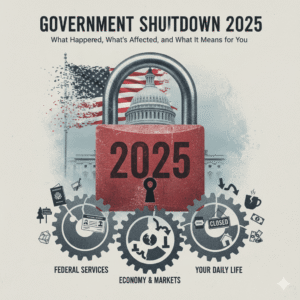The global coffee industry is thriving in 2025, not declining. Despite challenges like climate volatility, inflation, and supply-chain pressures, the coffee sector continues to expand, driven by specialty coffee demand, sustainability innovations, and emerging market growth across Asia and the Middle East.
According to the International Coffee Organization (ICO), global coffee consumption is projected to reach record highs in 2025, reaffirming that even amid economic uncertainty, the world’s passion for coffee remains stronger than ever. Reuters
What’s the Global Coffee Industry Growth in 2025?
Recent data from Ecofin Agency and Reuters show that worldwide coffee consumption for the 2025/2026 season is expected to reach 169.4 million 60-kg bags, up from 166.5 million the previous year. This steady climb underscores that the coffee industry is growing, not shrinking, despite rising costs and environmental disruptions.
Emerging markets like China, India, and the UAE are witnessing explosive coffee culture growth. Coffee chains are expanding aggressively, and younger demographics are embracing coffee as part of their daily routines. Meanwhile, established markets such as the United States remain steady with about 66% of American adults drinking coffee daily, according to the National Coffee Association. Bloomberg
This sustained global demand confirms that coffee’s appeal transcends economic cycles, it’s both a comfort beverage and a social ritual deeply embedded in daily life.
What Are the Specialties of the Coffee Industry?
Premium and Sustainable Demand Surge
The global specialty coffee market is booming, fueled by consumers’ willingness to pay more for ethically sourced, single-origin, and organic beans. According to PR Newswire, the specialty segment is projected to reach $69.8 billion by 2032, growing at a 4.75% CAGR from 2024 to 2032. PRNewswire
This “premiumization” trend highlights consumers’ growing preference for quality over quantity. Transparency in sourcing, fair trade certification, and environmental responsibility have become key purchasing factors, especially among younger, sustainability-minded coffee drinkers.
The Rise of Coffee Tech and Home Brewing
Technology continues to reshape how people consume coffee. From AI-enabled coffee machines and subscription-based delivery services to smart brewing systems, innovation is fueling convenience and customization.
Post-pandemic, the shift toward at-home coffee experiences has persisted. Consumers are investing in high-end espresso machines, grinders, and single-serve devices that bring barista-quality brews into their kitchens keeping coffee demand strong even as café visits fluctuate.
Regional Trends: Where Growth Is Happening
| Region | Growth Trend | Key Drivers |
| Asia-Pacific | Strong | Rising middle class, Western café influence, digital coffee ordering |
| North America | Steady | Specialty coffee boom, cold brew popularity, sustainability awareness |
| Europe | Moderate | High per-capita consumption, focus on ethical sourcing |
| Latin America | Mixed | Inflationary pressure, overlap between coffee producers and consumers |
In Brazil, the world’s second-largest coffee consumer, 24% of respondents reported cutting back consumption due to higher prices. However, analysts expect this to be a short-term adjustment rather than a lasting decline. Reuters
Meanwhile, India and China are showing some of the fastest consumption growth rates globally. In China alone, the number of coffee shops surpassed 50,000 in 2025, a testament to the growing café culture and urban middle-class expansion. Bloomberg
Market Challenges Affecting Coffee Industry Growth in 2025
While the overall trajectory is positive, the coffee industry faces several structural challenges that could impact profitability and sustainability:
Climate Volatility
Coffee crops are highly sensitive to temperature and rainfall changes. Unpredictable weather patterns, including droughts in Vietnam and heavy rains in Colombia, have disrupted harvest cycles and lowered yields. These supply-side constraints are pushing up global bean prices and threatening long-term stability. Reuters
Price Inflation
The costs of Arabica and Robusta beans have surged due to supply shortages and rising logistics expenses. This inflation trickles down to consumers, making coffee slightly more expensive at both retail and café levels. Still, global demand remains strong showing remarkable resilience against price hikes.
Sustainability Pressures
Governments, investors, and consumers alike are demanding transparency and accountability in sourcing. Companies must now demonstrate environmentally responsible farming and fair labor practices to maintain brand trust. Sustainability isn’t just a moral choice; it’s a business necessity that shapes consumer loyalty and regulatory compliance.
Despite these headwinds, the fundamentals remain robust coffee is not only a daily necessity but also a cultural staple that continues to expand into new markets.
Future Outlook: 2025–2030
Looking ahead, the coffee industry is expected to sustain moderate but steady growth through the end of the decade. The period between 2025 and 2030 will likely be defined by a balance of innovation, adaptation, and environmental accountability.
Here are key trends shaping the next five years:
- Emerging Market Expansion: Countries like Indonesia, China, and parts of Africa will lead global consumption growth, thanks to urbanization and rising disposable incomes.
- Sustainable Farming Investments: Major producers are investing in climate-resilient coffee varieties, regenerative agriculture, and renewable energy solutions.
- Product Diversification: Expect continued growth in cold brew, ready-to-drink (RTD) beverages, and plant-based coffee blends appealing to health-conscious consumers.
- Digital Supply Chains: AI and blockchain are transforming logistics, ensuring better traceability and transparency from farm to cup.
In summary, the coffee industry in 2025 is not just growing, it’s evolving. Through sustainability, innovation, and global expansion, it remains one of the world’s most dynamic and resilient industries. Whether you’re a café owner, investor, or casual drinker, the future of coffee looks both profitable and sustainable.







